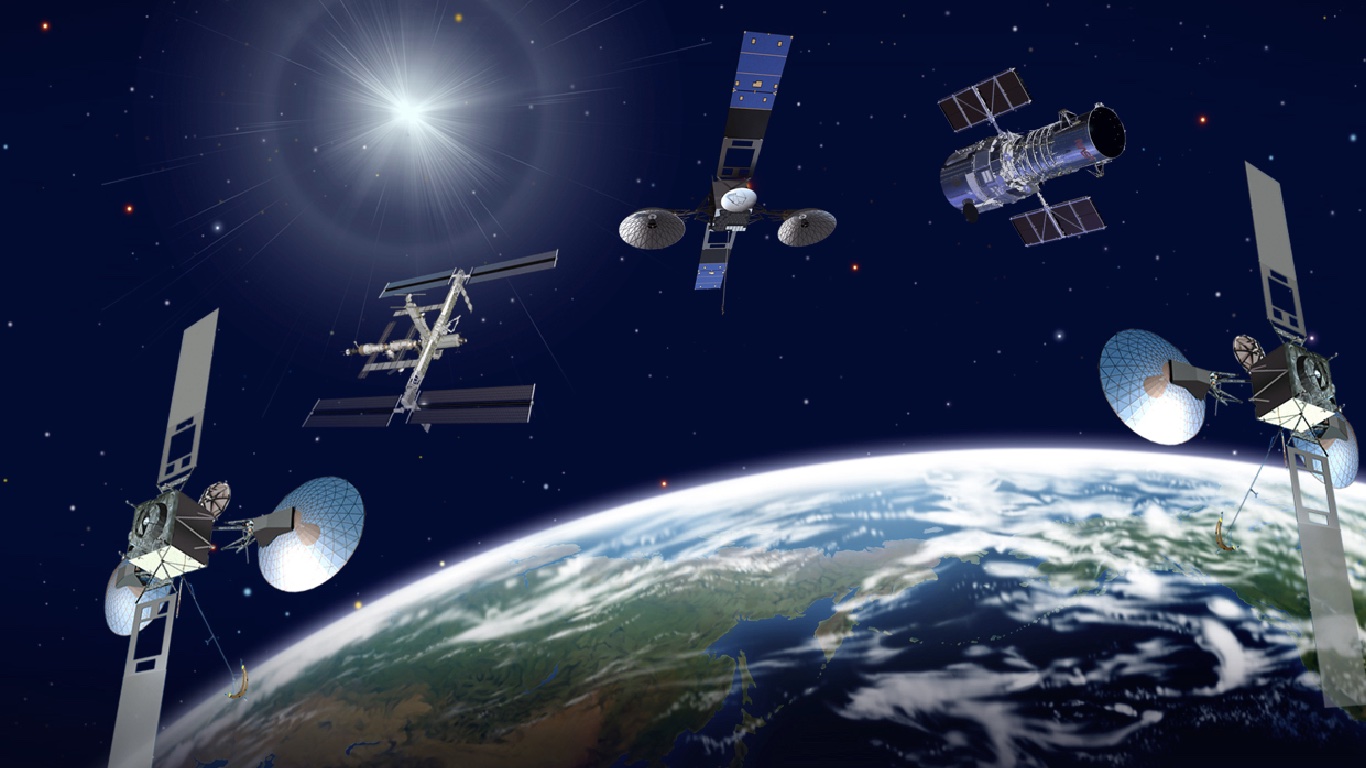Latest News

NASA TDRS satellites with the Hubble Telescope and ISS. Photo illustration: NASA
NASA will stop onboarding new missions to its Tracking and Data Relay Satellite (TDRS) system in November. NASA announced the change on Wednesday, which is effective as of November 8.
The TDRS constellation enables data transfer between NASA missions and Earth, including the International Space Station (ISS) and Hubble Space Telescope. The relay satellites recently supported the launch and ascent of NASA’s Europa Clipper mission earlier this week.
But TDRS is not ending operations — the system will continue to support missions until the mid-2030s.
There are upcoming missions that have not yet launched and have already contacted and set up services with TDRS, Julian Coltre, public affairs officer for NASA’s Space Communications and Navigation (SCaN) program, explained in a statement to Via Satellite.
“Future missions that have not yet secured their network services can use the Near Space Network’s direct-to-Earth capabilities. In this case, a mission or launch vehicle would send its data directly to an antenna on Earth rather than a space relay. These Earth-based antennas are both government and commercially owned,” Coltre said.
The TDRS constellation relays astronaut conversations from the ISS, photos from the Hubble Space Telescope, and more. The fleet began launching more than 40 years ago in 1983 and consists of three generations of satellites. There are currently seven TDRS satellites in operation and the last one, TDRS-13, was launched in August of 2017.
NASA is working with commercial providers to develop and demonstrate space relay capabilities to replace TDRS with commercial services used by both NASA and other customers. In 2022, NASA’s Space Communications and Navigation (SCaN) program awarded $278.5 million in contracts to Inmarsat Government, Kuiper Government Solutions, SES Government Solutions, SpaceX, Telesat U.S. Services, and Viasat to develop these commercial services in the Communications Services Project (CSP).
The goal is to validate and deliver space-based commercial communications services to the Near Space Network by 2031 to support future NASA missions.
“TDRS will continue to provide critical support for at least the next decade, but now is the time to embrace commercial services that could enhance science objectives, expand experimentation, and ultimately provide greater opportunities for discovery,” Kevin Coggins, deputy associate administrator of NASA’s SCaN program commented in a release.
NASA is also looking to non-reimbursable Space Act Agreements with industry players, like one signed with Kepler Communications earlier this month to give NASA insight into Kepler’s space data-relay capabilities.
In June, SES demonstrated space data relay between an SES O3b mPOWER satellite in Medium-Earth Orbit (MEO), and a Planet satellite in Low-Earth Orbit (LEO). This demonstration was part of the CSP.
Editor’s note: This story was updated on Oct. 17 with comment from NASA.
Stay connected and get ahead with the leading source of industry intel!
Subscribe Now